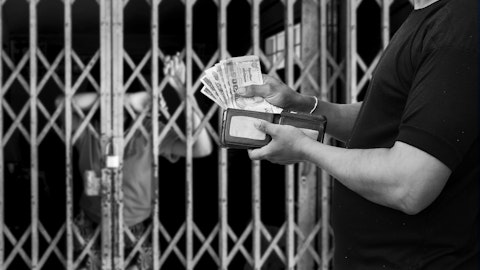Discussion about sex work never fails to be interesting, and in this article, we are bringing you the list of 7 types of prostitutes in India, Philippines and Amsterdam.
The oldest profession in the world, as they call it, has always been the subject of debate. It is not just the morality of it that is being discussed, but the legal status sex work should have. I believe that the most ironic aspect of it all is that a group of people who are in no way familiar with the lives and struggles of sex workers decides on whether providing sexual services for money should be legally permitted or not. Much like when the decision on the legal status of abortion is being brought, a group of male politicians gather and decide whether a woman should be allowed to abort her child.

Fisun Ivan/Shutterstock.com
When decisions are made on such matters, it should be done having in mind, primarily and most importantly, the experiences and the perspective of those whom the decision will affect the most, in this case, sex workers. The wrong approach to sex work many countries take nowadays has made sex workers one of the most marginalized groups of society. They are the epitome of discrimination and dehumanization. We have to be conscious at all times, however, that human rights sex workers are entitled to by their very nature of their being human, should be a priority over any existing moral dilemma over what sex workers indulge in.
The debate goes on, much like that over whether weed should be legalized or not, about which you can read in our article 10 countries that will legalize weed next. In this article, we are bringing you the list of 7 types of prostitutes in India, Philippines and Amsterdam and we also discuss whether the USA should legalize prostitution.
Global Network of Sex Work Projects is a membership organization, involving sex worker-led organizations across the world. Their primary objectives are acceptance of sex work as work, opposing all forms of criminalization and legal oppression of sex work, and supporting self-organization and self-determination of sex workers. In 2013 they published the consensus statement which addresses fundamental rights of sex workers as “crucial targets for their activism and advocacy.” The rights encompassed in the statement are: to associate and organize, to be protected by the law, to be free from violence, to be free from discrimination, to privacy, and freedom from arbitrary interference, to health, to move and migrate, and to work and free choice of employment.
The legal status of sex work affects the extent to which these rights are to be enjoyed by sex workers. In this particular case, the respective legal status of prostitution in India, the Netherlands and the Philippines affect the enjoyment of human rights by the 7 types of prostitutes working there to different extents. In 2011, Open Society Foundations published the guide titled Common Human Rights Violations Experiences by Sex Workers which “pairs common violations experienced by sex workers with relevant provisions of major human rights treaties.” Some of the rights violations they list are abuse within health care, police abuse, and denial of access to social benefits. Sex workers experience greater human rights violations in cases when sex work is criminalized. Apart from being unable to report crimes of violence against them for fear of being penalized, be these committed by police or clients, they also experience greater risk of getting STDs.
In 2014 World Health Organization published a document titled consolidated guidelines on HIV prevention, diagnosis, treatment and care for key populations, where they argue that decriminalization of sex work and drugs would contribute to putting an end to HIV pandemic. Amnesty International is another important international actor arguing for decriminalization of sex work. In 2016, Amnesty published a policy on state obligations to respect, protect and fulfil the human rights of sex workers. As indicated, “it recommends the decriminalization of consensual sex work, including those laws that prohibit associated activities – such as bans on buying, solicitation and general organization of sex work.”
The 7 types of prostitutes common in India, the Netherlands and the Philippines probably can be found in the USA too, however, in underground sex economy because sex work is criminalized in most of the USA. I say most because some rural areas in Nevada legalized prostitution, but even in Nevada, the authorities are rather strict. Out of 16 Nevada counties, only 12 permit sex work. Moreover, sex work is allowed only inside brothels which cannot be located inside towns, close to schools or places of worship. Even if you are indulging in sex work in a county where it is legal, but outside brothels, it is considered to be a violation of the existing law.
In an article published in 2013, Business Insider gives seven reasons as to why the USA should legalize sex work. They argue that such change in legislation would reduce violence against women, would make sex workers healthier, would be an additional source of tax revenue, and could save law enforcement resources. Furthermore, they argue that legalizing sex work would ensure that legally employed sex workers get their labor rights. Full legalization would no doubt ensure that some of the rights which are being violated in circumstances where sex work is criminalized are better protected.
However, if we look at it from human rights perspective, decriminalization appears to be a better option. As the example of Germany, where sex work is legalized, has shown, a great number of sex workers are reluctant to register as such in order to avoid paying taxes. Operating illegally means operating in the same circumstances as those when sex work is criminalized. Furthermore, the international organizations we referred to above and the Global Network of Sex Projects all argue for decriminalization and not legalization. As indicated above, it is the opinions of sex workers that should count in deciding on this matter, therefore, the best option for the USA would be to decriminalize sex work and in that way strengthen its role as the biggest advocate for human rights. 7 types of prostitutes working in India, the Netherlands and the Philippines enjoy their rights to different extents given that the legal status of prostitution in these countries is different.
As Dutch Review states, sex work in the Netherlands has been legalized since 2000. It is considered a regular job and sex workers even pay taxes. They are also eligible for unemployment and invalidity benefits, just like with any other job. Brothels are also legalized. One can run a business as long as it is licensed. At first, the legal age for work was 18, but then it was moved to 21. Medical checkups are not compulsory, unlike in many other states where sex work is legalized. The idea behind this is that “the Dutch government didn’t want to reinforce the idea that sex workers transmit infections.”
As Maps of India write, sex work in India is not illegal as such, but there are some activities related to sex work which are criminalized. These activities are: owning a brothel and running it, pimping, pandering, soliciting services in public places, and providing services in hotels. Given that most of these are inherent to the idea of being a sex worker, the effectiveness of legislation put in place is questionable. The statistics indicate that there are around 2 million sex workers in India. While many of them pursue this lifestyle willingly for the need of money, there are many who are coerced into it. There is even National Network of Sex Workers which is concerned with the promotion of sex workers’ rights in India.
Although widely practiced, sex work in the Philippines is illegal. As Rough Guides suggests, sex work is practiced under the guise of entertainment where sex workers are employed as dancers, singers, waitresses or “guest relations officers.” Sex tourism is rather popular in the Philippines. Coalition Against Trafficking in Women states that many Australians, Americans, Brits, and Europeans visit the Philippines every year for sex tours.
Having in mind the information provided above and the content of the book “Legalizing Prostitution” written by prof. Ronald Weitzer, where the author identifies the six most common types of prostitutes, we provide a list of the 7 types of prostitutes in India, Philippines and Amsterdam.
I would like to thank prof. Weitzer for taking the time to reply to my inquiries regarding the topic in question. Now let’s see what’s next on our list of types of prostitutes in India, Philippines and Amsterdam.





